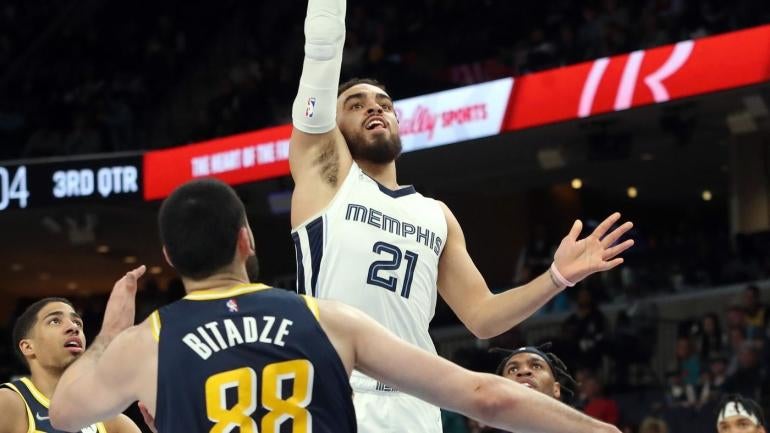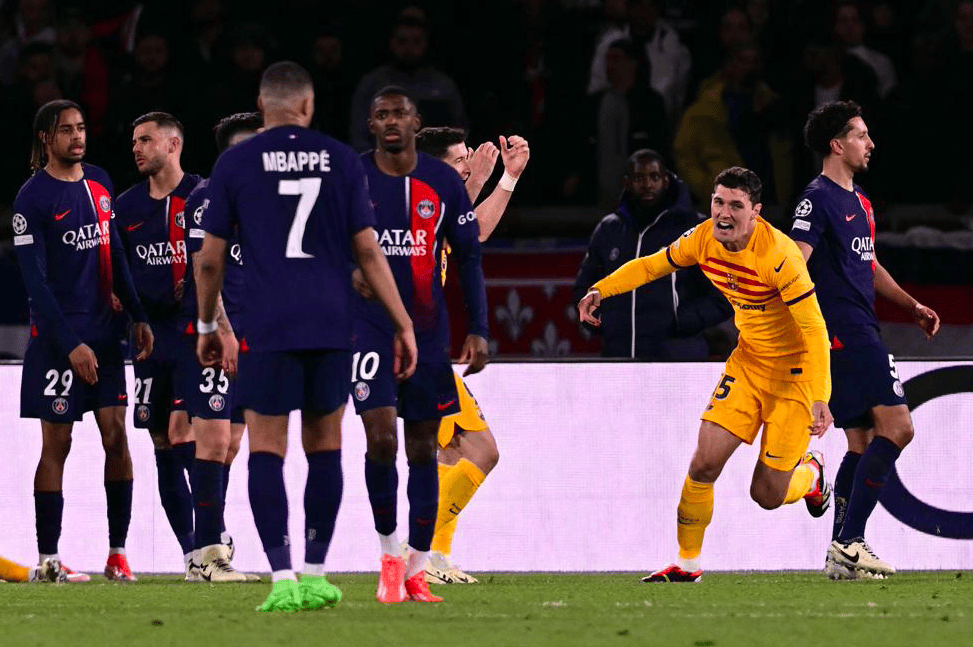Congratulations. We made it. If you’re reading this, you’re almost certainly in contention for a championship. Only 10 more days separate you from eternal glory.
The waiver wire is loaded this week with all kinds of players who can make a big impact during this final week. Take advantage – at this point in the season, at least half your roster is droppable. Remember: you’re not going to lose the league because you dropped the 87th best player with two games left in the season; you might lose because you let your opponent pick up both Davion Mitchell and Tyus Jones.
Before we get to the players, I want to make one last pitch for readers to check out the “schedule notes and strategies” section at the end. Championships are on the line! Make sure you’re getting the most out of the schedule and your league’s settings.
Finally, if you’ve been reading this column all season – thank you. My job only exists because you all continue to read these columns. I hope you enjoyed my overcommitment to Kevin Huerter. If, during the offseason, you find yourself longing for some pro-Alperen Sengun propaganda, just find me on Twitter and I’ll be happy to oblige.
As usual, the players in this article must be rostered in less than two-thirds of CBS leagues. Players are listed in the order that I recommend adding them, assuming they are equally good fits for your team.
Mục Lục
Adds for all leagues
Davion Mitchell, Kings (67% rostered)
Mitchell has been on fire since De’Aaron Fox (a definitely real, non-tanking injury) got hurt. Mitchell has started in six games. The first was only OK. Over the next five, he averaged 24-4-8. It’s a tiny sample size, but that’s top-30 production (top-50 in 9-cat). Look at those numbers. I don’t need to sell this. You just need to add him.
Drew Eubanks, Trail Blazers (53% rostered)
Been talking about Eubanks for a few weeks now, which is weird – he shouldn’t be this available anymore. Over the last 11 games, he’s averaging 18-10-2 on absolutely elite shooting efficiency. That’s getting to be a large sample size. He’s inside the top 50 during that window. Every team, even juggernauts steamrolling their way to a championship, has several players worse than that.
Isaiah Roby (40% rostered)
Aleksej PoJCsevski (51% rostered)
Theo Maledon (12% rostered), Thunder
Silly season is in full effect in Oklahoma City, where players I’ve purposefully avoided all season are now undeniable all-leagues prospects. The race for the league’s worst record is heating up, and the Thunder enter the final week with two wins too many. Every player whose status as a long-term NBA player is settled is out, and these three are the best of what’s left. (Note: Tre Mann might have made this a foursome, but he’s out with a hamstring injury and may not return this season)
Roby has easily been the best of the bunch, putting up 19-8-3 with 1.8 blocks over his last four games. His recent numbers are really similar to Eubanks’, just with better defense and worse shooting efficiency. He’s possibly the best picJCp on the board this week, especially if Davion Mitchell is already gone or you’re in need of big man stats.
Maledon can score in bunches and is across-the-board solid everywhere else – he’s slightly above average in assists, steals, and FT% impact, and positionally neutral in rebounds, blocks, threes, FG% impact, and turnovers.
As for PoJCsevski, his box scores are as unusual as his physique. He’s had standout performances in every category at one point or another, but there’s no rhyme or reason to which ones he’ll excel in on any given night. Last week his best strength was assists, but the week before that his passing was down and he averaged 3.0 stocks per game (evenly split between steals and blocks). Who knows what he’ll put up next week, but playing 30-plus minutes per game, it’s bound to be something.
Tyus Jones, Grizzlies (33% rostered)
He’s taking Friday off, which may lead to some managers dropping him. Take advantage of their foolishness. The Grizzlies have one of the best Week 25 schedules, and Jones is an all-leagues auto-start with Ja Morant (knee) sidelined. Since entering the starting lineup six games ago, he’s averaging 14-3-7 with 2.2 threes and solid steals and shooting splits. Morant might return late next week, which would hurt Jones, but: A) Morant also might not, and B) if he does come back, he’s almost certain to be on a minutes restriction, leaving Jones with a still-large workload.
Alperen Sengun, Rockets (58% rostered)
It took a lot longer than I wanted, but the Rockets are finally starting to unleash Sengun. Or, if not fully “unleashed”, then at least they graduated him to one of those long retracting/extendable 30-feet guys. What I’m trying to say is he’s up to 23.9 minutes over his last seven. Furthermore, Christian Wood is finally done for the season, opening up even more minutes for Sengun – in his first Wood-free start Monday, he played 29 minutes. If we project Sengun’s per-minute stats to 30 minutes a game, he’d average 15-8-4 with 1.5 steals and 1.5 blocks.
Bruce Brown, Nets (60% rostered)
Step 1. Open new Word doc. Step 2. Confirm that Bruce Brown’s roster rate is still below 67%. Step 3, copy the paragraph from last week into this week’s article.
Ok, maybe not exactly cut-and-paste (he did get bumped out of the top spot, after all), but the tl;dr is still the same: Brown is an all-leagues must-add (to the extent “must-add”s are still a thing in championship week).
Brown’s numbers are down some over the last three games, now that Kyrie Irving is playing every game and the supporting cast is mostly healthy. But even with a drop in minutes, Brown’s still a borderline top-100 player. Not quite the top-45 in 9-cat (top-65 in 8-cat) production he had been putting up between the trade deadline and last week, but still a well-rounded production profile that does no harm and is particularly helpful on defense.
Brandon Williams, Trail Blazers (43% rostered)
Another repeat name from a tanking team. Williams has averaged 10 assists per game over his last three games. If I had any belief that he could keep that pace going, he’d be this week’s top add. That said, even assuming he does start to cool off quickly, he’s still a solid play.
Trey Lyles, Kings (25% rostered)
Lyles entered the starting lineup 15 games ago, and he’s averaged 27.5 minutes since. That’s good, but focusing on his recent stretch looks even better – over his last seven games, he’s up to 14-8-3 in 32.0 minutes. With Richaun Holmes (personal) definitely done for the season and Domantas Sabonis (knee) probably done, there are no remaining threats to Lyles’ workload.
Brook Lopez, Bucks (31% rostered)
Nothing new to add from what I said last week: if you need blocks and Roby is already off the board, Lopez might be your best option. If you aren’t chasing blocks, ignore Lopez, there are better options elsewhere.
Other recommendations: Isaiah Hartenstein, Clippers (25% rostered); Killian Hayes, Pistons (23% rostered); De’Anthony Melton, Grizzlies (44% rostered); Deni Avdija, Wizards (34% rostered); Chris Boucher, Raptors (48% rostered); Jose Alvarado, Pelicans (10% rostered)
Schedule Notes and Strategies
With championships on the line, every extra game played can be the difference between glory and defeat. So here’s some tips to make sure you find yourself on the right side of a YooHoo bath.
Every league has different rules, and your league’s settings should determine which elements of the schedule are most important to you. The biggest questions right now are:
-
Do you set lineups weekly or daily?
-
How many acquisitions are you allowed? (Most leagues have a weekly maximum, though some have a season-long max, and others have no max at all; this only really matters in daily lineups leagues)
The analysis below is split into sub-sections to help managers focus on advice for their own leagues’ formats.
Also, I cannot recommend this tool highly enough – the RotoWire NBA Schedule Grid. It’s a great tool for looking at a whole week’s schedule and identifying the teams who can help you the most.
Weekly lineups
The absolute most important schedule nuance for weekly managers this week is knowing when your lineups lock. There are no games on Monday, but some leagues will lock lineups at 7 pm EST; other leagues will lock when the first games start (Tuesday at 7 pm EST), while others will lock one roster spot at a time as each individual players’ first game starts on Tuesday or Wednesday (or Thursday for the Warriors). Don’t get stuck with a non-optimal lineup because you misunderstood your league’s rules.
Week 25 is evenly split between three-game weeks (14 teams) and four-game weeks (16 teams). With an even split, three-game weeks are not as harmful as usual, but four-game weeks are still better.
The following teams have four-game weeks in Week 25: Hawks, Nets, Hornets, Bulls, Lakers, Grizzlies, Bucks, Pelicans, Thunder, 76ers, Suns, Trail Blazers, Spurs, Raptors, Jazz and Wizards.
Every team with four games plays on Tuesday and participates in exactly one back-to-back. Among those teams, there might be a slight advantage in using players on the Hawks, Nets, Hornets, Bulls, Grizzlies or Jazz – those are the only teams in the league who are off on Sunday, April 3, so they enter the final week with an extra day of rest.
Also worth noting: the Nuggets and Timberwolves play only three games, but all three are at home and with at least one day of rest beforehand. Among the teams with a three-game week, that gives them a bit of an edge. The Nuggets are in a tight seeding battle, so they’re somewhat likely to play it straight down the stretch. While this isn’t mathematically true yet, the Timberwolves are effectively locked into the West’s 7th seed. That means they’re likely to rest some players for at least one of their three games.
While that’s bad news for managers with Karl-Anthony Towns, Anthony Edwards, D’Angelo Russell or Patrick Beverley, it’s great news for managers who were hoping to rely on more fringe-level Fantasy prospects, especially Jarred Vanderbilt and Naz Reid, or Jordan McLaughlin in deeper leagues.
Daily lineups
Week 25 is weird. There are no games Monday, a massive 12-game slate Tuesday, only four games on Saturday, and every single team plays on Sunday – the last day of the regular season. Daily lineups managers who plan ahead can gain a massive advantage by taking advantage of the schedule and maximizing starts.
The first thing managers must do is check their lineups on Tuesday and Friday (nine games Friday). Most managers will have an empty spot on Friday, while their lineups will already be full on Tuesday – but that won’t be the case for everyone. And most managers are going to have tons of room in their starting lineups on the lighter days (Wednesday, Thursday, Saturday).
Maximizing your games played this week should be your top priority, and the fact that you probably have no room for waiver picJCps on one or both busy days gives you a strategic advantage. Though waiver acquisition limits may prevent you from turning your entire fantasy bench into streaming spots, you should plan to stream as much as possible and use all available picJCps.
As a rule of thumb, any player outside roughly the top 80 is droppable now, as long as you are increasing your total games played by dropping that player. That means that once your Tuesday lineup is set, you should replace any non-stars on your bench with players who are active on Wednesday. Similarly, on Friday, you should make sure that anyone on your bench has a game on Saturday.
All else being equal, the best Week 25 schedules probably belong to the Grizzlies, Pelicans, Spurs, and 76ers. Those teams have four-game weeks including one on Saturday’s light four-game slate.
The other way for a team to have an above-average Week 25 schedule is to play two games on Wednesday, Thursday, or Saturday, thereby avoiding the busy 12-game Tuesday and nine-game Friday slates. Seven teams meet that criteria – the Celtics, Warriors, and Clippers, who play three-game weeks, and the four teams mentioned in the paragraph above.
Daily lineups, strict acquisition limits:
Managers in this format will want to maximize adding players with early or mid-week back-to-backs, since everyone is active on Sunday. Much of the advice in the “daily lineups” section applies here, so read that section first, but I’ll add some new tips below.
The imbalanced Week 25 schedule makes it more complicated than usual for managers with strict acquisition limits. That said, more complicated also means more opportunities for strategic advantage.
The big change here, compared to a “normal” week, is that back-to-backs don’t matter if your lineups are already full on one of the two days. For example, if your lineup is already full on Friday’s nine-game slate, then adding someone with a Thursday-Friday back-to-back (Hornets, Trail Blazers, Bucks, Raptors, Lakers) is no better than a player who plays Thursday and is off Friday. In this situation, managers should actually target players who play Thursday and Saturday – the Warriors, Grizzlies, Pelicans, 76ers, and Spurs.
While players on those five teams are most valuable for managers with an already-full Friday lineup, all managers with strict acquisition limits should target them as mid-week picJCps. Even if your Friday lineup isn’t already full, your opponents probably will be, and they should be targeting these teams.
The Celtics are another interesting mid-week target. They are the only team in the league with a Wednesday-Thursday back-to-back.
Lastly, one strategy managers should consider with their mid-week adds is to focus primarily on maximizing Saturday’s games. With rosters almost certainly full on Tuesday and Sunday, there are only three or four days that really matter this week. Under this strategy, managers should prioritize adding Clippers on Wednesday, and then players from one of the five Thursday-Saturday teams on Thursday.


 JC THỂ THAO
JC THỂ THAO









